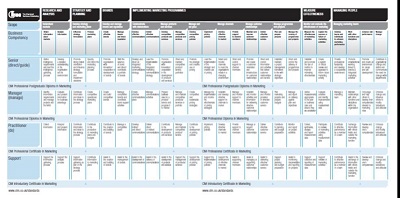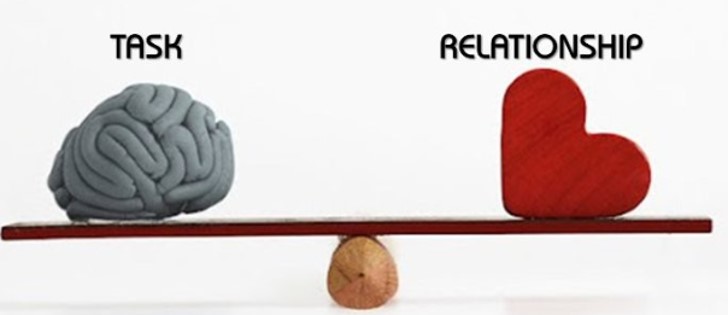
Most people know that I have been a staunch supporter of the Chartered Institute of Marketing (CIM) in the past.
Call me a Luddite but I really liked the old CIM marketing standards (see above). They gave a clear picture of what marketers were expected to know and be able to do at each stage of their career – from support and practitioner grades through to manager and director level.
OK, it wasn’t an easy fit for professional services marketers but it was a practical and succinct guide. Many firms I have worked with used the standards as a foundation for their own competency and assessment frameworks.
And yes, as the world of marketing is moving at such break neck speed, those standards desperately needed to be updated.
So when the new standards were recently released http://www.cim.co.uk/About/Mktgstandards/Introduction.aspx I was delighted that elements such as customer experience, value propositions, digital, internal communication, cross-functional teams and change management were given such prominence in the mix. But I’m not convinced that the new standards are as helpful as the old ones.
Yes, there’s a distinction between knowledge and application but how easy will it be to determine this in reality?
And there appears to be some strange omissions. For example, the centrality of profit, lead generation and customer retention and relationships isn’t apparent. I couldn’t find any reference to price or to project management. Whilst MkIS is mentioned and the word digital appears frequently there’s a surprising lack of detail. I couldn’t find the word community and engagement anywhere. And what about the importance of CRM? And to what extent are sales capabilities – so critical in the B2B environment – incorporated?
The list of behaviours is laudable – but how achievable are they really for the vast majority of young marketers? And this element is little more than a list.
I’d be interested to hear your views.
The new standards
At the top level the marketing standards are organised into capabilities, technical knowledge and behaviours:
| Core | Technical | Behaviours |
| Insights | Reputation, risk and compliance | Commercially aware |
| Strategy | Brand | Financially literate |
| Championing the customer | Integrated marketing communications | Creative |
| Digital capability | Influencing | |
| Monitoring and measuring effectiveness | Collaborative | |
| Channel to market/partnership marketing | Responsible | |
| Value propositions | Entrepreneurial | |
| Customer experience | Challenging | |
| Innovative | ||
| Inspiring |
Each of these are then broken down into the competency level:
- Aware (limited knowledge or experience with full potential to develop)
- Active (Meaningful knowledge with some experience and application)
- Able (Full knowledge of the concepts and application to the business)
- Accomplished (An advanced degree of knowledge and consistent application)
- Authoritative (Mastery at the highest level of knowledge and application)
There are then further divisions depending on the topic:
Core
Insights – obtains information about markets and analyses information for insights
Strategy – formulates strategy (marketing and digital) and produces marketing plans
Championing the customer – Aligns the organisation around the customer, works collaboratively and manages change
Technical
Reputation, risk and compliance – manages corporate reputation and manages risk and compliance
Brand – Develops brand strategy and positioning, manages brand effectiveness and manages brand performance
Integrated marketing communications – develops and delivers integrated marketing communications
Digital – develops, integrates and delivers digital capability
Monitoring and measuring effectiveness – measures the effectiveness of marketing activities, uses analytics to explain the success or failure of marketing activities and monitors digital and social reputation
Channels to market – develops and delivers channel to market and partnership marketing plans
Value propositions – innovates value propositions and manages value propositions, products and services
Customer experience – articulates the desired customer experience and delivers the customer experience and customer satisfaction









